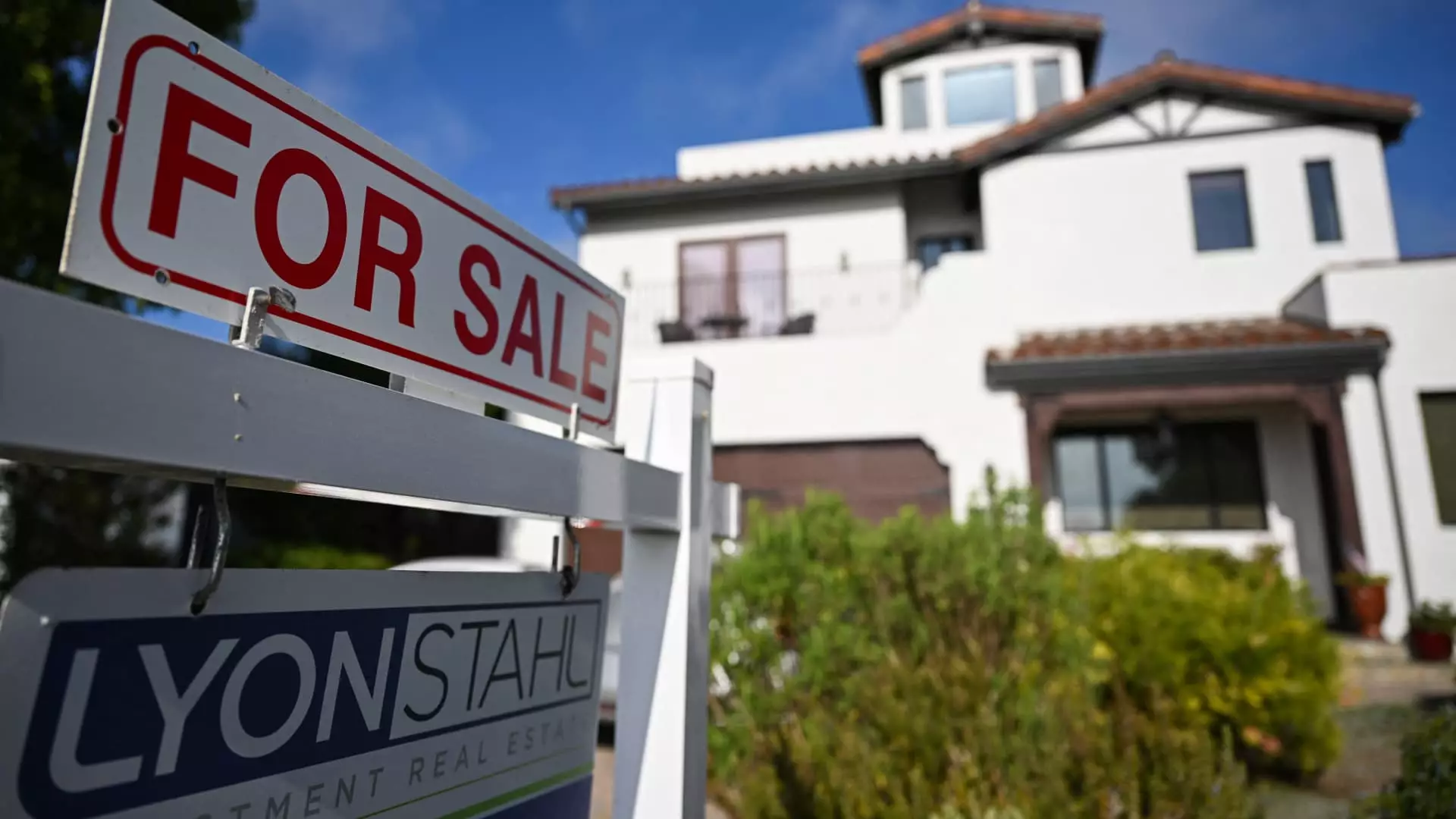The sudden drop in mortgage rates by 12 basis points, as reported after the Trump administration’s tariff announcements, could be perceived as a double-edged sword. While the average rate for a 30-year fixed loan fell to 6.63%—the lowest since October—examining the broader implications reveals a more complex scenario at play. Tariffs significantly impact global trade and could reverberate through various economic sectors, affecting everything from consumer spending to employment rates. The notion that a flicker of hope in the mortgage market can be solely credited to tariff-induced turmoil is misleading.
Matthew Graham, the Chief Operating Officer at Mortgage News Daily, pointed out the market’s trepidation over trade relations. While the bond market may have benefited from a flight to safety amidst stock market volatility, this situation raises legitimate concerns about long-term economic stability. Here lies a paradox: in an environment where increasing tariffs heighten uncertainty, a short-term fall in mortgage rates might simply signal deeper troubles ahead.
Housing Market Crisis Unveiled
The housing sector is currently facing unprecedented challenges that the recent drop in mortgage rates does little to assuage. With the typical monthly payment skyrocketing to $2,802 as of late March—a figure that marks a record high for two consecutive weeks—homeownership is slipping further out of reach for millions of Americans. The claim that we are entering a historically busy spring season seems optimistic at best, particularly when juxtaposed against skyrocketing sale prices, which have risen 3.4% year-over-year.
Many prospective buyers are still reeling from the repercussions of the pandemic-era economic policies and rising inflation, significantly impacting affordability. Approximately 70% of American households simply cannot afford a $400,000 home; the statistics are alarming. As home prices continue to escalate, the National Association of Home Builders projects that the estimated median price of a new home could reach $460,000 by 2025—forcing an estimated 52.87 million households to only consider homes priced at or below $200,000 if they follow traditional income thresholds.
The Supply-Demand Paradox
While there is a reported uptick in home supply, it’s essential to underscore that these new listings are not aimed at the lower end of the market where demand is most pressing. Chronic underbuilding since the Great Recession has led to a supply mismatch, leaving first-time buyers and those with modest budgets in the cold. The slight increase in new listings and active listings may create an illusion of a healthy market, yet the reality is a grim picture painted by the statistics.
Realtor.com’s recent report indicates a significant rise in listings coupled with a growing trend of homes sitting unsold longer and reductions in prices. This phenomenon suggests a shift towards a buyers’ market but should also raise alarms about declining buyer confidence—if consumers believe prices won’t recover, they may hesitate to invest. Some real estate professionals, like Redfin agent Matt Ferris, have noted a willingness among sellers to cash in, fearing potential job losses amid economic instability.
The Sluggish Spring Awakening
The early spring season paints a troubling portrait of the housing market. A reported 10% increase in new listings juxtaposed with a 5.2% fall in pending sales reveals an unsettling divergence between supply and demand. Cities like Jacksonville and Miami have felt the impacts more profoundly, experiencing double-digit declines in pending sales as residents respond to the economic and social shifts birthed by the pandemic. This downtrend highlights the danger of a market adaptation that’s too slow to match the speed of economic reality.
Consumers are wary, possibly paralyzed by uncertainty—long gone are the days of frantic bidding wars and soaring price tags. As Danielle Hale, the chief economist for Realtor.com, aptly stated, we are witnessing a market that is rebalancing but not recovering. The upcoming months will be critical to see if this rebalancing can transition into growth or whether it merely serves as a precursor to further stagnation.
In an era where economic fragility and shifting societal norms dominate discussions, the housing market appears to be a barometer of broader discontent. For those hoping for a rebound—whether they are first-time buyers or seasoned investors—the landscape is riddled with potholes that could lead to even deeper crises. The lure of lower mortgage rates may serve as a false dawn, masking the severe realities that lay just beneath the surface.

